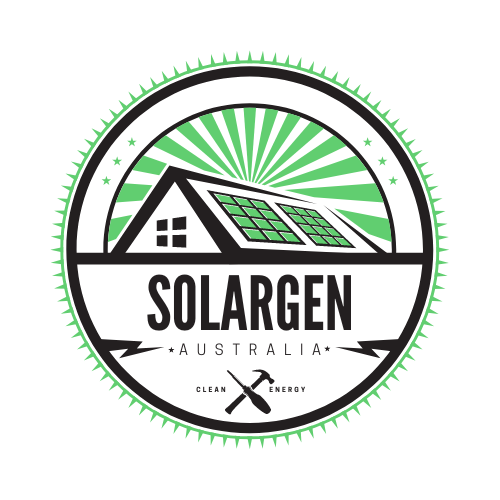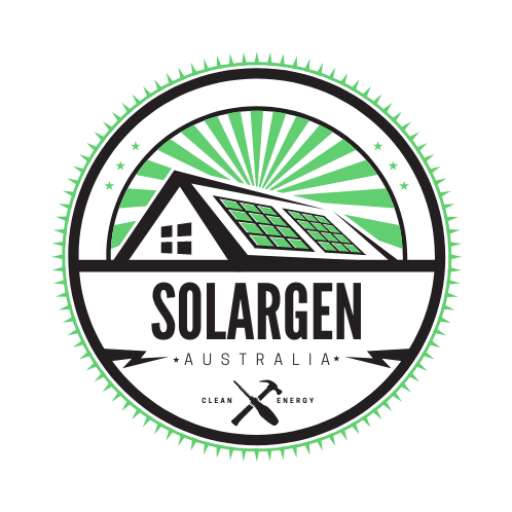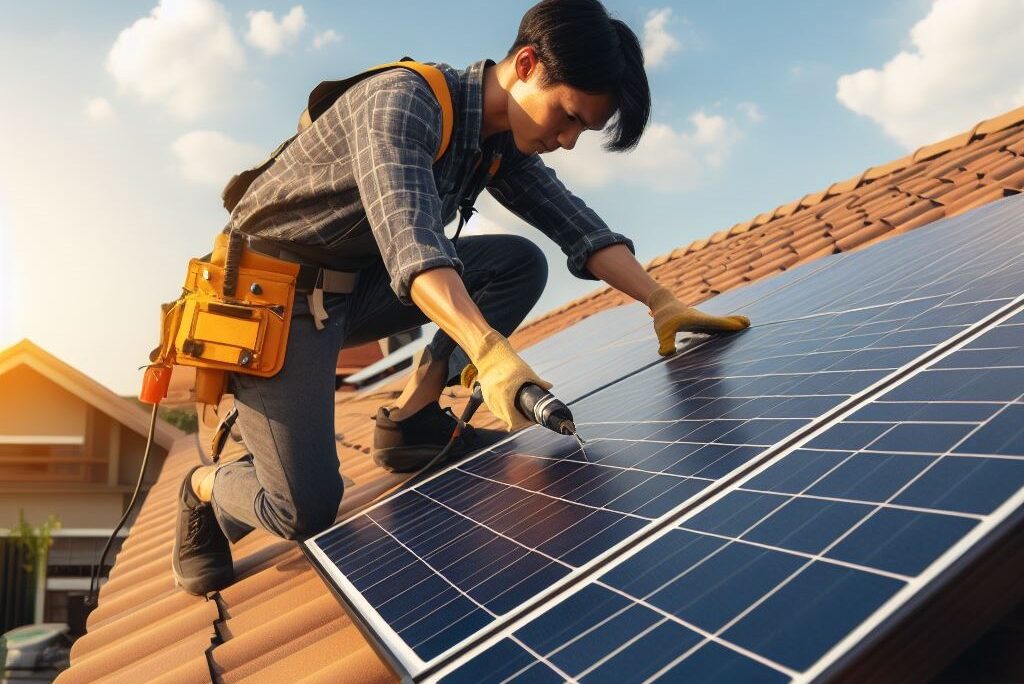- Australia is taking steps towards a more sustainable future, with solar energy leading the way. If you are considering adopting this green energy source, here is your detailed guide on installing solar panels at home.
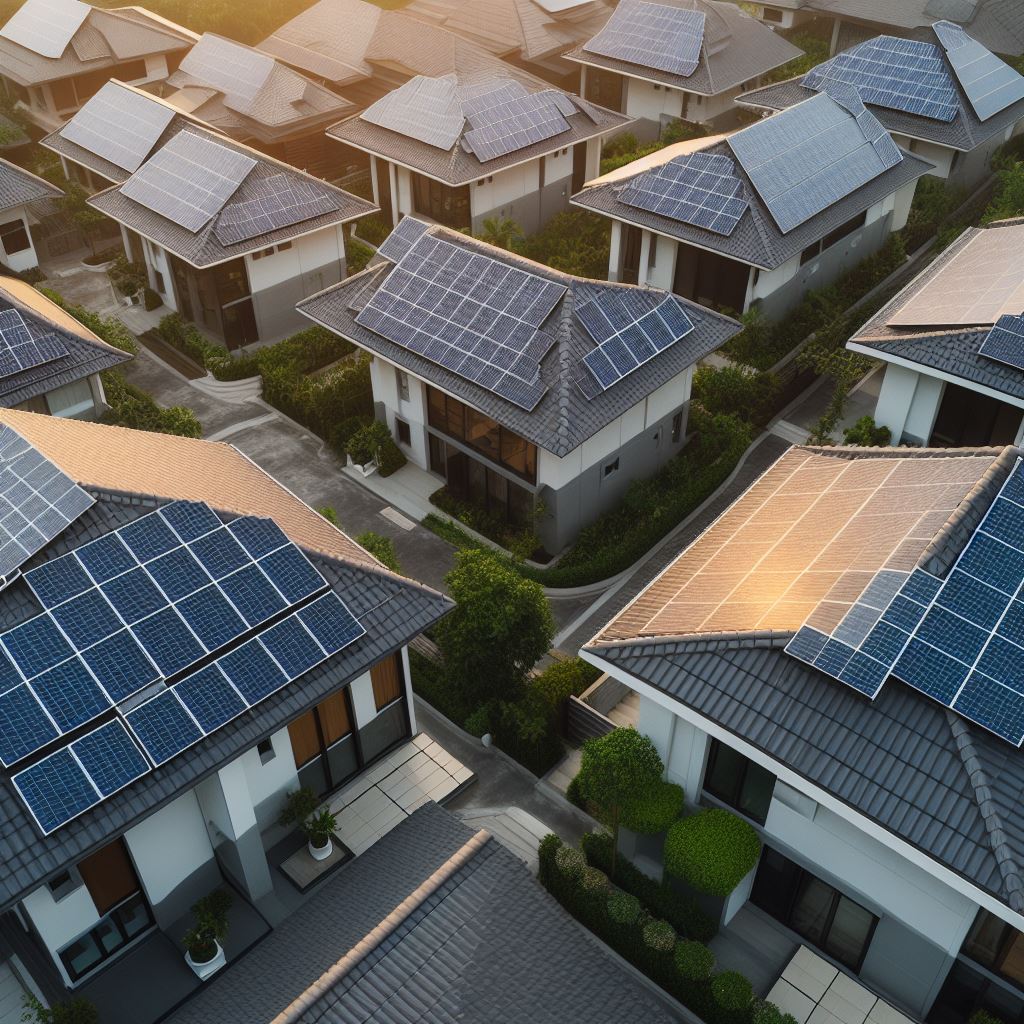 Precise panel placement ensures optimal solar energy absorption.
Precise panel placement ensures optimal solar energy absorption.
1. Preparation is Key
Research is important before venturing into the solar world. Understanding your energy needs, local solar incentives, and finding a reputable installer are your first steps. This preparation will make the process of installing solar power less difficult.
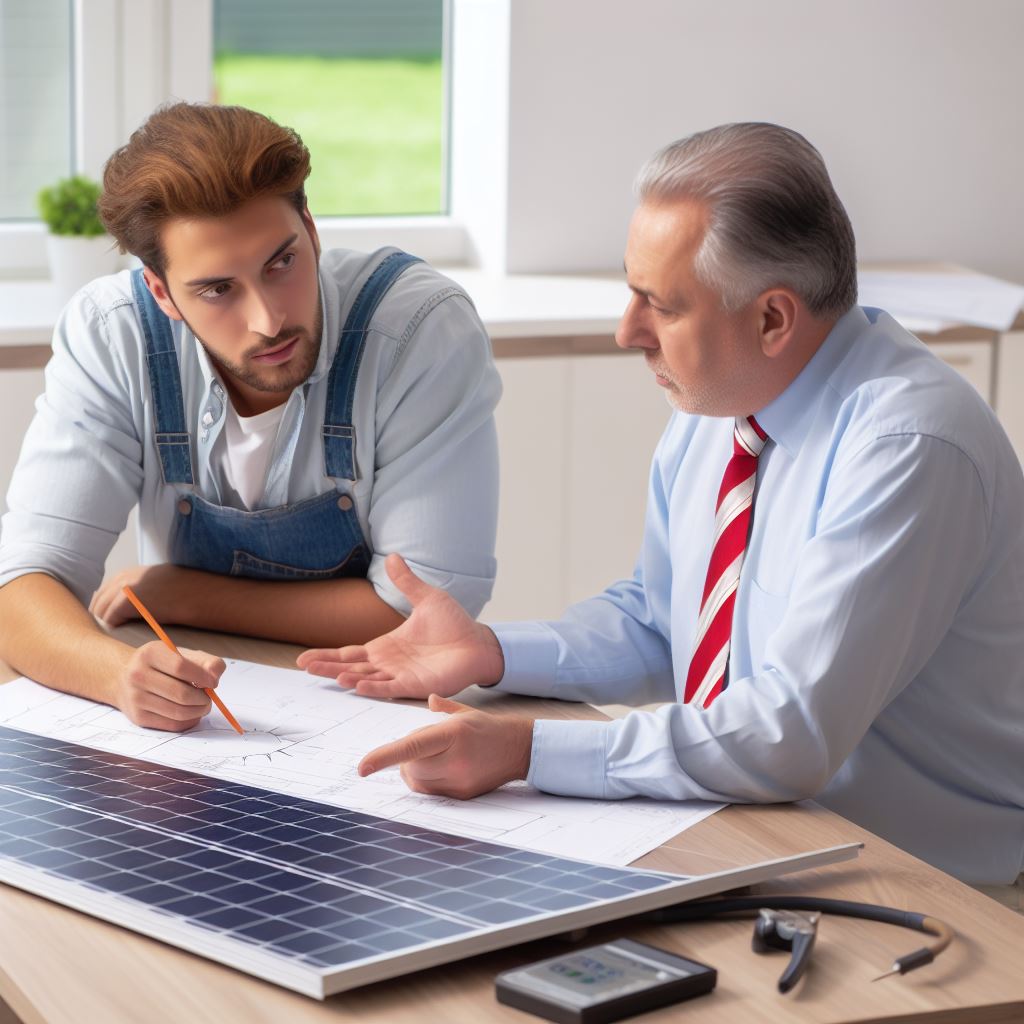 Finding the right solar installer is the cornerstone of a successful solar transition.
Finding the right solar installer is the cornerstone of a successful solar transition.
2. Choosing the Right Installer
It is important to select a skilled installer for a seamless solar installation. Look for certified professionals with solid track records. They should be able to clearly answer all your questions and offer competitive pricing.
3. Evaluating Your Roof
Your roof’s condition and orientation significantly affect the solar panels’ performance. Ensure it’s in good condition and has a favorable orientation towards the sun.
4. Obtaining Necessary Permits
Before proceeding, secure the necessary permits. Your installer should help you navigate through the local permitting process, making sure all regulations are followed.
Checkout our blog on Solar Rebates: Solar Rebates
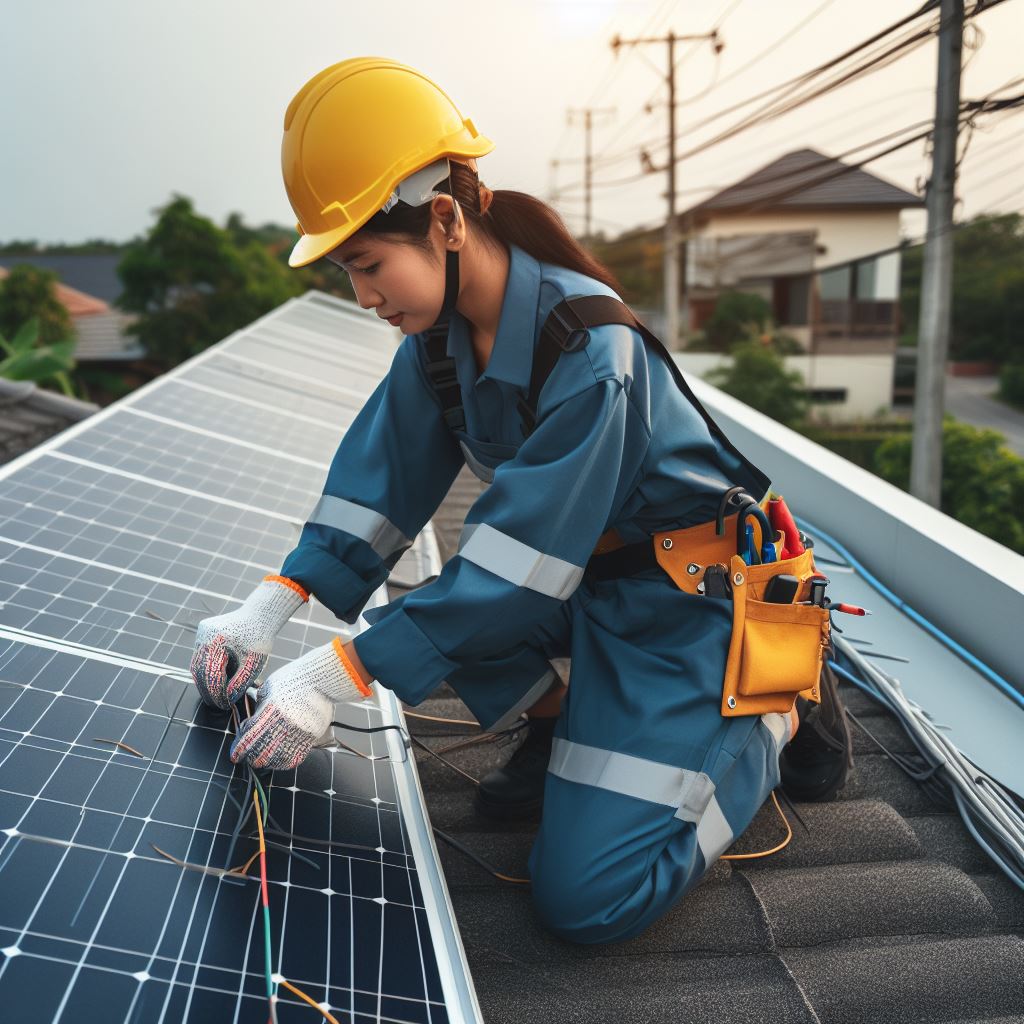 Adherence to safety and electrical standards is crucial during solar panel installation.
Adherence to safety and electrical standards is crucial during solar panel installation.
5. Installation Day
On the day of installation:
a) Safety 1st: Make sure all safety measures are in place to protect yourself and the installation crew.
b) Panel Placement: Your installer will place the panels according to the design plan.
c) Wiring: All wiring must comply with local electrical standards. Installation of
d) inverter: Inverters will be installed to convert solar energy into useful electricity.
e) Testing: After installation, a thorough inspection and testing are performed to make sure everything is operating correctly.
6. System Monitoring
Once your system is up and running, regular monitoring is essential. Monitoring systems allow you to track the performance of your solar system and ensure that it is working efficiently.
 Stay informed and optimize your solar energy usage with modern monitoring systems.
Stay informed and optimize your solar energy usage with modern monitoring systems.
Maintenance for Longevity
Regular maintenance, including cleaning and inspections, will ensure your solar system’s longevity and optimal performance.
The Wrap-Up
Investing in solar energy means investing in a green future. By installing solar panels at home, you are not only cutting your energy bills but also contributing to a sustainable and energy-efficient Australia.
Related articles
This blog post is designed to provide a comprehensive insight into the process of installing solar panels. However, specific details may vary depending on your location and the solar company you choose. It’s always advisable to consult with professional solar installers for personalized guidance.
